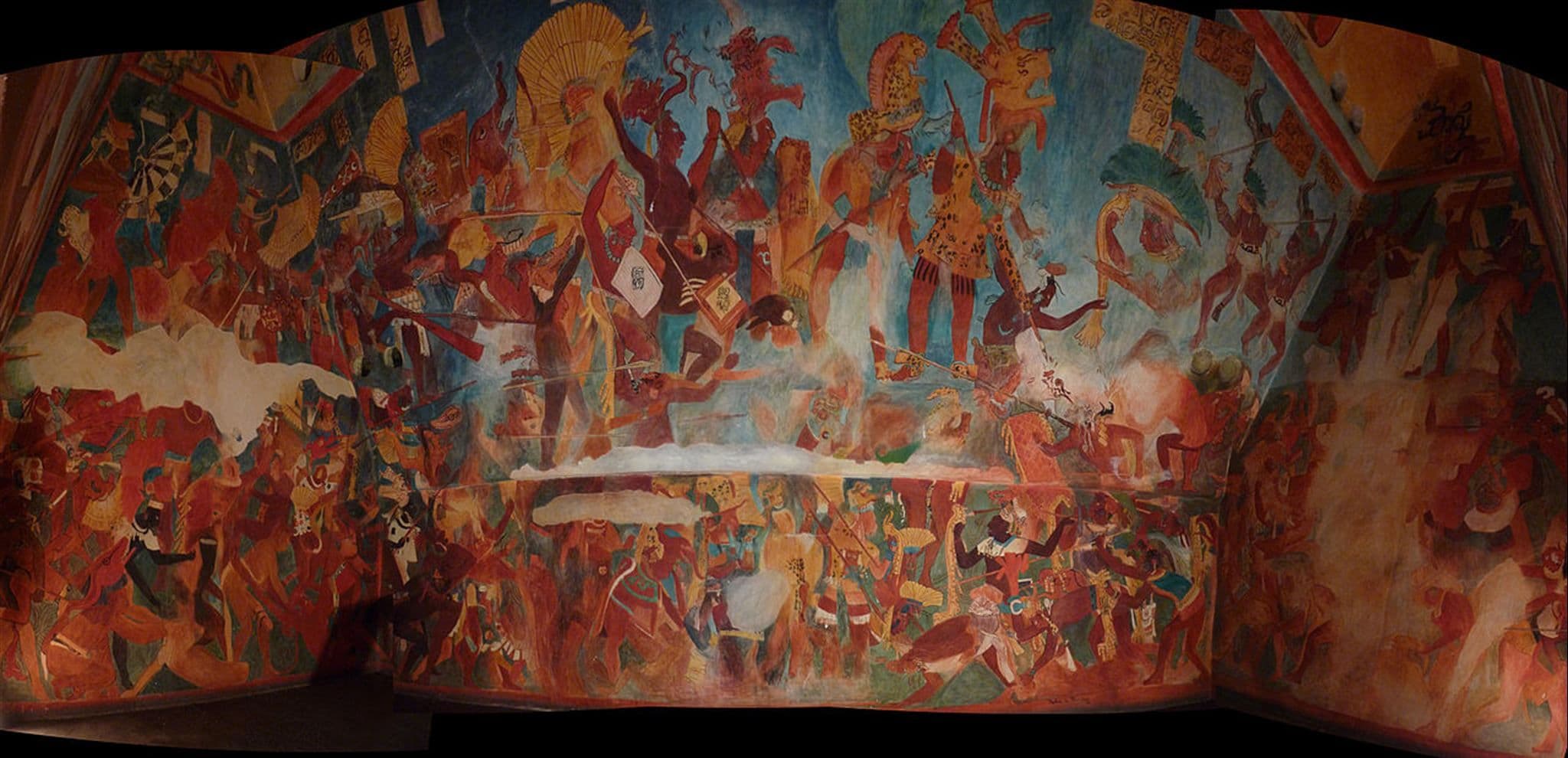Evidence #51 | September 19, 2020
Book of Mormon Evidence: Total Warfare
Post contributed by
Scripture Central

Abstract
Archaeological and textual evidence indicates that during the Classic Period, the Maya were practicing“total warfare” in a manner that supports descriptions found in the Book of Mormon.In Moroni’s conclusion of his father’s record (ca. AD 400), he reported the nearly complete destruction of his people and then documented widespread warfare among the Lamanites: “the Lamanites are at war one with another; and the whole face of this land is one continual round of murder and bloodshed; and no one knoweth the end of the war” (Mormon 8:8). This situation was foreseen generations earlier by Nephi, who prophesied that after the destruction of his people, “I saw wars and rumors of wars among [the Lamanites]; and in wars and rumors of wars I saw many generations pass away” (1 Nephi 12:21).
Until fairly recently, most specialists believed that until the Terminal Classic period (AD 800–950) Maya societies only engaged in “ritualized,” small-scale, token warfare.1 Recent developments, however, are overturning this view. In an August 2019 article from Nature Human Behavior, total warfare is “defined … as targeting both civilian and military resources resulting in widespread destruction of a city.”2 The article goes on to document the near total destruction of a Maya city called Witzna (anciently known as Bahlam Jol) in AD 697. Archaeological and textual evidence indicates that Witzna was the victim of an incendiary attack launched by Naranjo, a city-state 32 kilometers to the south.3
Naranjo also burned the site known today as Buenavista del Cayo (anciently Komkom), Ucanal (anciently K’an Witznal) and the unlocated K’inchil near the same time.4
Evidence from epigraphic data and core samples of lake sediment indicates that Witzna was invaded militarily and burned on a previous occasion, and charcoal layers point as many as two earlier burnings.5 According to the article, “The evidence associated with Naranjo’s attack on Witzna in 697CE indicates total warfare tactics were employed in the Maya lowlands before TCP [Terminal Classic Period], during a time described as a peak in prosperity and artistic sophistication.”6
This data from Witzna helps confirm the views of many specialists who are now saying the Maya practiced highly destructive warfare through most of the Classic period (AD 250–900).7 Takeshi Inomata, for example, has noted, “There is an increasing understanding that there were destructive wars throughout the Classic period.”8 James Brady concurred, “I was never convinced that warfare before the Terminal Classic was only ritualized. It must have been a fact of life from a very early time, and it often had serious consequences.”9 Only recently has the scholarly consensus shifted to better support Moroni’s description of the total destruction of his people (ca AD 385) and the “continual round of murder and bloodshed” that followed (Mormon 8:1–8).
Book of Mormon Central, “Why Was the City of Ammonihah Destroyed and Left Desolate? (Alma 16:9–11),” KnoWhy 123 (June 16, 2016).
John L. Sorenson, Mormon’s Codex: An Ancient American Book (Provo, and Salt Lake City, UT: Neal A. Maxwell Institute for Religious Scholarship and Deseret Book, 2013), 381–425.
Stephen D. Ricks and William J. Hamblin, eds., Warfare in the Book of Mormon (Salt Lake City and Provo, UT: Deseret Book and FARMS, 1990).
- 1. After that, it was thought that a combination of drought-induced famines followed by highly destructive “total war” jointly caused the Classic era collapse.
- 2. David Wahl, Lysanna Anderson, Francisco Estrada-Belli, and Alexandre Tokovinine, “Palaeoenvironmental, Epigraphic, and Archaeological Evidence of Total Warfare among the Classic Maya” Nature Human Behavior 3 (2019): 1049.
- 3. David Wahl, et al., “Palaeoenvironmental, Epigraphic, and Archaeological Evidence,” 1049–1054.
- 4. David Wahl, et al., “Palaeoenvironmental, Epigraphic, and Archaeological Evidence,” 1049.
- 5. David Wahl, et al., “Palaeoenvironmental, Epigraphic, and Archaeological Evidence,” 1049–1050.
- 6. David Wahl, et al., “Palaeoenvironmental, Epigraphic, and Archaeological Evidence,” 1052; emphasis added.
- 7. For various scholarly works which espouse this view, see Andrew Scherer and John Verano, Embattled Bodies, Embattled Places: War in Pre-Columbian Mesoamerica and the Andes (Washington, DC: Dumbarton Oaks, 2014).
- 8. As quoted in Tim Vernimmen, “Ancient Maya Practiced ‘Total War’ Well before Climate Stress,” National Geographic, August 5, 2019, online at nationalgeographic.com.
- 9. As quoted in Vernimmen, “Ancient Maya Practiced ‘Total War’,” online at nationalgeographic.com.